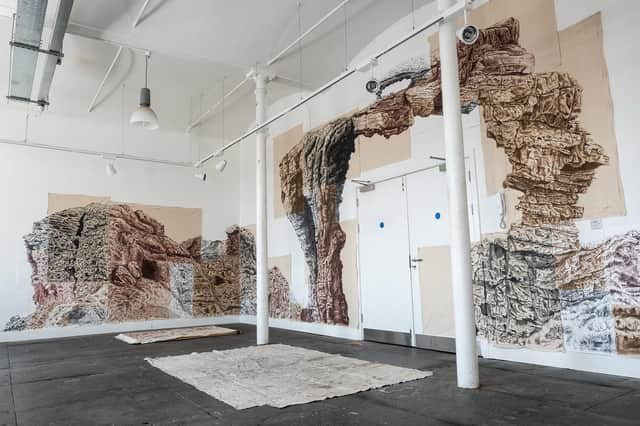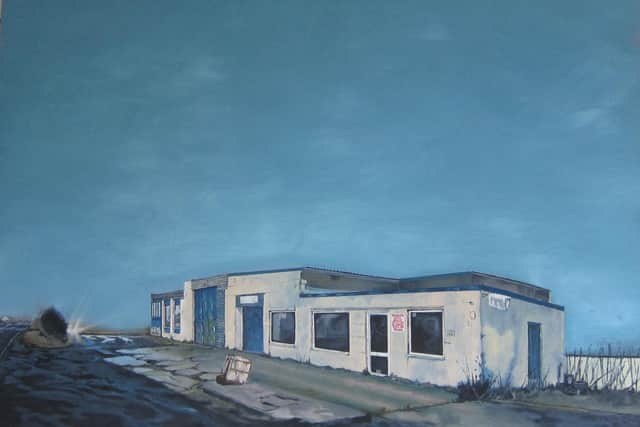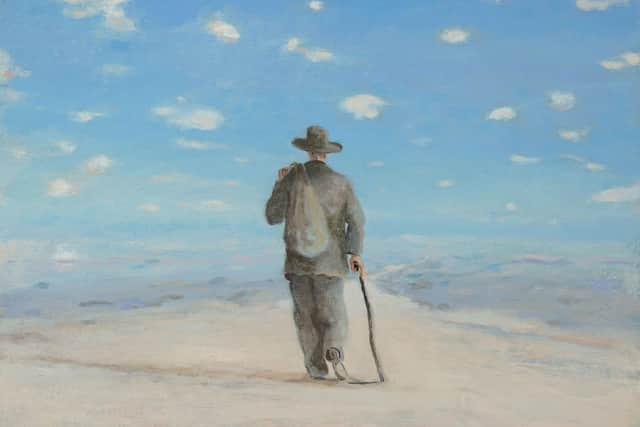Art reviews: SSA Annual Exhibition | Barry McGlashan


SSA 123rd Annual Exhibition, Royal Scottish Academy ****
Barry McGlashan, Between the Dream and Waking, Scottish Gallery ****
The Society of Scottish Artists is back with what it reckons is the largest exhibition to take place in Scotland since the start of the pandemic. With 170 works on display it is certainly a substantial show. Occupying the whole of the main floor of the RSA building, it has been hung with care and so really doesn’t look crowded. As ever, there is a huge range of work, from the very large to the very small and from the inscrutable to the straightforward.


Advertisement
Hide AdEvery year the Society aims to go round the art schools and select recent graduates. Because this is really two years rolled into one, at least as a physical exhibition, there are twice as many and they do make a good showing. You are greeted at the top of the stairs by two literally visceral pieces, Being Mother, and Seeing Her by Louise Black, a recent graduate of Duncan of Jordanstone in Dundee. Wadding is stuffed into tights to look like entrails, while added hair seems to identify them as female and human. If as a comment on the female condition, the point is not a new one, but the impact is there nonetheless.
Gender is an issue with Edinburgh College of Art graduate Adam Brown too. In a short film and two striking photographs titled Fear of the Feminine of an apparently female figure lying in the grass by the sea, he appears to ruminate on his own gender. In a rather different mood Megan Moss from Gray’s School of Art in Aberdeen ruminates on the forms of street lamps and includes a sculpture composed of three lit lamps to illuminate her interest.
One of the largest objects on display is a big wooden sculpture by Otto Gobey, recent graduate of Edinburgh. Nicely made, it is called Railing but looks like a stranded sail from a windmill. Paintings by Dundee graduate Ellen Mitchinson occupy the prime spots on the walls at either end of the main gallery. They look like loosely assembled body parts and that is very much what their titles suggest: Twelve Arms, Seven Knees and Thirty Two Nails, and Fourteen Nipples, Twelve Hands and Thirteen Eyes.
The work of more established artists is just as diverse. One of the biggest and most impressive works is a huge drawing by Calum Wallis. It appears to be of a fantastical rock arch and is done on separate sheets of paper and bits of canvas assembled on the wall like a jigsaw puzzle. Two paintings by Thomas Adam are also very striking, particularly 06.38 Commuter Town Platform. A row of noses above a shadowed railway line with dawn glimmering beyond, it exactly captures the dehumanising process of the daily human shuttle. Alicia Rodzik’s Comb Me Not is the opposite and very human. A mother and child are wrapped into a three-dimensional knot; there is human hair at the centre and a brutal looking comb alongside.


Gill Walton’s Life’s Breath is also of mother and child. It is a life-size drawing in black graphite of a mother, standing holding her child. The breath of both of them is rendered in a cloud of silver leaf. Unframed on a roll of paper, it is particularly striking against the bare stone of the Sculpture Court. In three very small works at the other end of the scale, Katie Hallam appears to comment on the mismatch between the natural and the cybernetic worlds. Two consist of printed computer circuits on a cross section of a birch tree. The third, Digital Storm, seems to be a vivid, multicoloured metaphor for total computer breakdown.
The abstraction of art, once so scandalous, now seems familiar and homely compared to the reduction of the world and everything in it to the binary code of digital abstraction. Susie Leiper’s Language III seems to mirror in colour, shadow and pattern the layers of meaning in real language. In Untitled 1918, Avis Wu pays homage to Josef Albers. I don’t know about the date, but in 1918 Albers’s first ever commission was for a stained glass window. Naomi McClure’s Campden Town Revisited, a rather beautiful, shaped panel in muted pink and grey, invokes the very different tradition of the local and domestic paintings of the Camden Town school. Joy Arden’s Bluepink2 is a small but very atmospheric piece of gestural painting in the post-war School of Paris tradition. Susan Elizabeth Wilson’s Oakberries 2 is another very accomplished small gestural painting. There is figurative painting too of course. Beneath a bare lightbulb, Luke Vinnicombe’s artist searching for intimation contemplates his muse in the form of a big black cat.
Advertisement
Hide AdThis is the centenary of George Wylie, sometime president of the SSA, and he is commemorated in a small display. Following his mentor Josef Beuys, Wylie’s principal concern as an artist was the extent to which the human and natural worlds are out of kilter. That was more than 30 years ago, but it has since become ever more topical. He summarised this concern in his signature image, the spire. A steel rod of aspiration is supported on a tripod so it is free to swing, but it is balanced beneath by a rock at its lower end. Earth and air - like all good metaphors it is simple in form and complex in meaning.
Much of Wylie’s early work was comic and he once asked me whether I thought he should stick with the comedy or follow the more serious line he was developing at the time. There was no question, and then of course he met Beuys, but happily he never lost his irreverent sense of fun. It is there in the word he invented for his work: he called it Scu?ture. I think Barry McGlashan, whose show Between the Dream and Waking is at the Scottish Gallery, faces a similar dilemma to George Wylie. He too has a vivid sense of humour and it eloquently informs his work.


Advertisement
Hide AdThe paintings on show range widely in subject matter from whaling in the Arctic to the Wild West in the cinema. There are lovely pictures here of cowboys in the desert and of whalers in the Arctic ice, but he also goes beyond such sometimes comic historicism to echo the Ancient Mariner in scenes of icy wilderness, or to capture the poetic sensibility in the northern landscapes of Edvard Munch and Caspar David Friedrich.
Two paintings here, All Days are Nights and Nights Bright Days I & II and also a painting called Girl on the Shore are beautiful echoes of Munch at his most poetic, but also of Friedrich. Friedrich is there too in the inspiration of Islands, a smaller work where a man, seen from behind, gazes out toward an enormous setting sun, and, too, in Bergs, in Summer Night, or Sun in the Mist. But these pictures are not derivative. McGlashan paints beautifully and here, especially in smaller works like these, more freely than hitherto. We see this in a little painting of a shipwreck called Prophecy, for instance, or in a lovely, nearly abstract picture called Wake, just a swirl of white against blue. He doesn’t need to become an abstract painter, but the mood he catches in pictures like these is quite exquisite and suggests the way his work might go.
SSA 123rd Annual Exhibition until 23rd November; Barry McGlashan until 27 November
A message from the Editor
Thank you for reading this article. We're more reliant on your support than ever as the shift in consumer habits brought about by coronavirus impacts our advertisers.
If you haven't already, please consider supporting our trusted, fact-checked journalism by taking out a digital subscription at https://www.scotsman.com/subscriptions